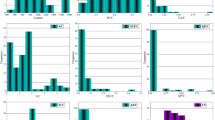Abstract
Concrete is a popular construction material which is used in most of the construction processes as a major stress resistance material due to its strength characteristics. Designing a concrete mix is tough task which includes the appropriate proportion of the ingredients used in particular environment with the objective to produce concrete mix with specified strength, durability, workability and as economical as possible. Traditionally, a concrete mix is accepted or rejected depending on its destructive testing which demands time and materials. Recently, data-driven techniques like artificial neural networks, genetic programming, fuzzy logic, etc., are been used efficiently to predict 28-day strength of concrete. Fuzzy logic is efficiently used for predicting the strength of concrete but involves a tedious activity of defining the rules. Thus, the aim of the current paper is to predict 28-day strength of concrete using fuzzy logic algorithm, and an attempt is done to define the rules of the algorithm using model tree. Two different models were developed: with fuzzy logic and traditional method of rule formation and fuzzy logic and rule formation using model tree (termed as hybrid model). The inputs of the models are cement, fly ash, fine aggregate, 10 mm coarse aggregate, 20 mm coarse aggregate, water, admixture all in kg/m3 and output as 28 days strength of concrete in MPa. The results of this hybrid model display promising results as compared to the basic fuzzy model developed.
Access this chapter
Tax calculation will be finalised at checkout
Purchases are for personal use only
Similar content being viewed by others
References
Shetty, M. S. (2005). Concrete technology (17th ed.). New Delhi: S. Chand and Company.
Tayfur, G., Erdem, K. T., & Kırca, O. (2014). Strength prediction of high strength concrete by fuzzy logic and artificial neural networks. Journal of Materials in Civil Engineering, 26(11), 401–407.
Topcu, B. L., & Sarıdemir, M. (2008). Prediction of compressive strength of concrete containing fly ash using artificial neural networks and fuzzy logic. Computational Materials Science, 41(3), 305–311.
Vakhshouri, B., & Nejadi, S. (2018). Prediction of compressive strength of self-compacting concrete by ANFIS models. Neurocomputing, 280(6), 13–22.
Diab, A. M., Elyamany, H. E., Elmoaty, A. E. M. A., & Shalan, A. H. (2015) Comparison between neural network and fuzzy logic on assessment of long term concrete compressive strength and expansion due to sulfate attack. International Journal for Research in Applied Science and Engineering Technology, 3, 175–192.
Seyed, A. A., & Naderpour, H. (2015). Application of fuzzy logic in reinforced concrete structures. https://doi.org/10.4203/ccp.109.10.
Lotfi, A., Andersen, H. C., & Tsoi, A. C. (1996). Matrix formulation of fuzzy rule-based systems. IEEE Transactions on Systems, Man, and Cybernetics, Part B (Cybernetics), 26(2), 332–340.
Deepa, C., SathiyaKumari, K., & Sudha, K. P. (2010). Prediction of the compressive strength of high performance concrete mix using tree based modeling. International Journal of Computers and Applications, 6(5), 18–24.
Deshpande, N., Londhe, S., & Kulkarni, S. (2014). Modeling compressive strength of recycled aggregate concrete by artificial neural network, model tree and non-linear regression. International Journal of Sustainable Built Environment, 3, 187–198.
Tayfur, G. (2012). Soft computing in water resources engineering. WIT Press.
Quinlan, J. R. (1992). Learning with continuous classes. In A. Adams & L. Sterling (Eds.), Proceedings of 5th Australian Joint Conference on Artificial Intelligence. Singapore: World Scientific.
David, R. L., Jr., & Gregory, J. (1999). Evaluating the use of “goodness of fit” measures in hydrological and hydro climatic model validation. Water Resources Research, 35(1), 233–241.
Author information
Authors and Affiliations
Corresponding author
Editor information
Editors and Affiliations
Rights and permissions
Copyright information
© 2020 Springer Nature Singapore Pte Ltd.
About this paper
Cite this paper
Nagarkar, V., Kulkarni, P., Londhe, S. (2020). Prediction of Concrete Compressive Strength Using Fuzzy Logic and Model Tree. In: Subramaniam, K., Khan, M. (eds) Advances in Structural Engineering. Lecture Notes in Civil Engineering, vol 74. Springer, Singapore. https://doi.org/10.1007/978-981-15-4079-0_20
Download citation
DOI: https://doi.org/10.1007/978-981-15-4079-0_20
Published:
Publisher Name: Springer, Singapore
Print ISBN: 978-981-15-4078-3
Online ISBN: 978-981-15-4079-0
eBook Packages: EngineeringEngineering (R0)




